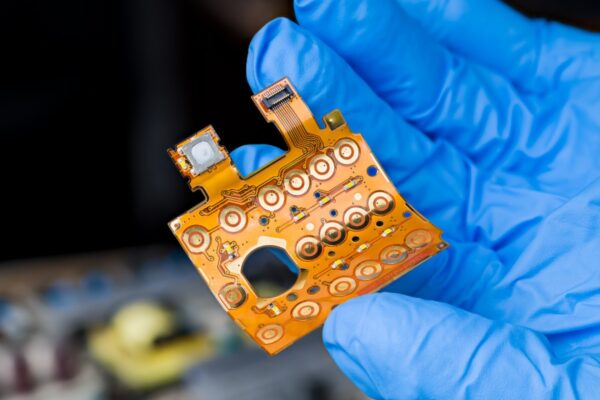What is Extraneous Copper
Extraneous copper is the presence of unwanted copper on the base material after the chemical processing stage. It is considered a defect that can negatively impact the functionality and performance of the PCB.
This issue typically arises during the etching process, where the goal is to selectively remove copper from specific areas to create the desired circuitry. However, extraneous copper occurs when either copper remains in areas where it should have been removed or when photoresist, a light-sensitive material used to protect certain areas of the copper during etching, remains on the copper surface.
The root cause of extraneous copper is often attributed to a phenomenon known as resist lock-in. Resist lock-in refers to the adhesion of the photoresist to the copper surface, preventing its complete removal during the etching process. Several factors can contribute to resist lock-in and the subsequent occurrence of extraneous copper.
One possible cause is the use of excessive resist lamination temperatures. High temperatures during the lamination process can lead to the thermal curing of the photoresist, making it difficult to develop cleanly and resulting in the presence of extraneous copper.
Oxidation of the panels prior to resist lamination is another factor that can contribute to extraneous copper. If the panels are oxidized before the lamination process, it can lead to resist lock-in and the subsequent occurrence of extraneous copper.
Issues with wet or dry lamination can also contribute to the presence of extraneous copper. In wet lamination, where a thin layer of water is applied to the copper surface before resist lamination, it is crucial to use resists that are compatible with wet lamination and strictly adhere to hold time and its conditions to avoid resist lock-in and excess copper. Similarly, in dry lamination, if the post-lamination hold time is too long or if the temperature and humidity are too high, it can favor copper oxidation, leading to extraneous copper.
Exposure of the copper surface to hydrochloric acid fumes during the etching process can also cause resist lock-in and result in the presence of extraneous copper, even if post-lamination hold times and conditions are normal.
Other factors that can contribute to extraneous copper include applying excessive pressure or using high temperatures during lamination, excessive surface roughness (topography) of the copper surface caused by aggressive chemical cleaning or scrubbing, and the presence of developer or unexposed resist residues on the copper surface due to insufficient rinsing or inadequate control of the developing solution.
To minimize the occurrence of extraneous copper, it is crucial to ensure proper process control and adhere to best practices in PCB manufacturing. This includes careful handling, surface preparation, diligent resist lamination, minimal hold times between process steps, and meticulous control of all processes associated with resist exposure and development.





